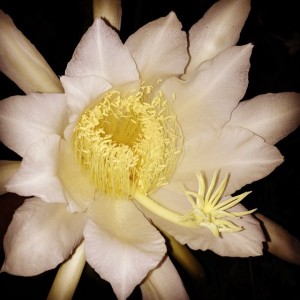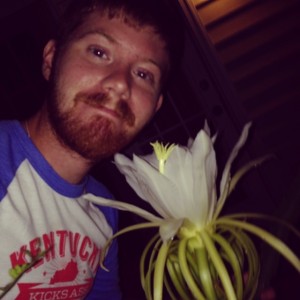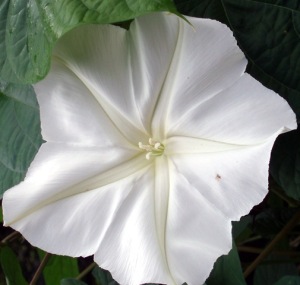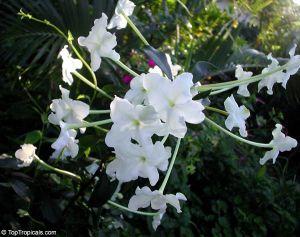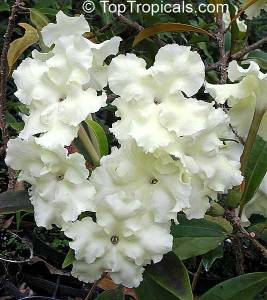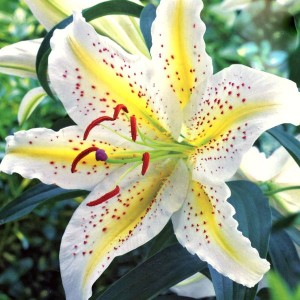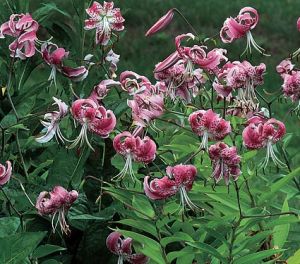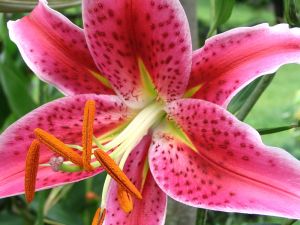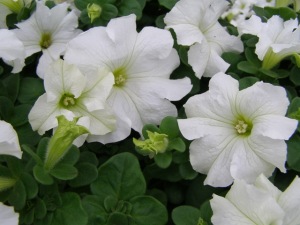
Petunia ‘Dreams White’. http://www.parkswholesaleplants.com
While many of the fragrant annuals grown are most know for their fragrance during the day, a few are particularly know for their night fragrance. Petunias have the luck of being fragrant both at night and day, but the fragrances are completely different between the two. The purple petunias of day have a nice warm fragrance, almost like daylilies, but with a sinister kick that resides in all solanaceous plants; But at night, this fragrance is akin more to clove. This fragrance is so pervasive that entire garden centers and lawns at evening are reminiscent of fine clove wherever they are grown in abundance! The white petunias are freest with the clove fragrance, all others less free and with a bit more floral in them.Petunias are easily the most well-known and widely grown fragrant annual of the night, and its clove-scent pierces its surroundings, even on dark, cloudy days, and in a way that would make pure night-fragrant plants jealous.
Petunias are widespread and easily grown as an annual, and the wave series surely adorns every hanging basket in the Eastern United States! Petunias require little, except well-drained soil, full sun, and plenty of fertilizer. They also require deadheading for a true all-summer display. Who would have ever thought, a dowdy tobacco relative from South America would be brought from obscurity to be such a popular garden plant? Well, too many relatives of them have been to be honest…but that’s beside the point.
Other widely grown petunias besides the wave series have been supertunias, multifloras and grandifloras, but each hybrid has its own perk. Related Calibrachoa, although similar in look, have little to no fragrance in them.

Matthiola longipetala. 6, December, 2006. Al-Bargit. Wikimedia Commons.
Another commonly grown night-blooming (or at least night-fragrant) annual is stocks. Stocks are best known as fillers in cut-flower arrangements, where both day and night-fragrant species are used. Stocks are Mustard family relatives, native to the Northern Hemisphere, and grown outdoors in cool gardens in the Northern European and Northern American reaches. Otherwise, they are grown as short annuals in early spring or early to late fall in warmer climates.
M. incana and M. longipetala are the species best represented in the garden and as cut flowers. M. incana hybrids are known for having double flowers, but the true to type species and the one that survives and reproduces is the single. These are better cut flowers, and are fragrant during the day as well. The single species is mostly white-flowered. M. longipetala is a better garden plant, but is true to type in being evening and night-fragrant only. The flowers of these are purplish, and appear wilted in strong sunlight. M. longipetala also tends to bloom for a longer period than the ’10-weeks stock’ M. incana. Both feature a nice, clove-like, sweet fragrance at evening, strongly reminiscent of pinks and carnations.

